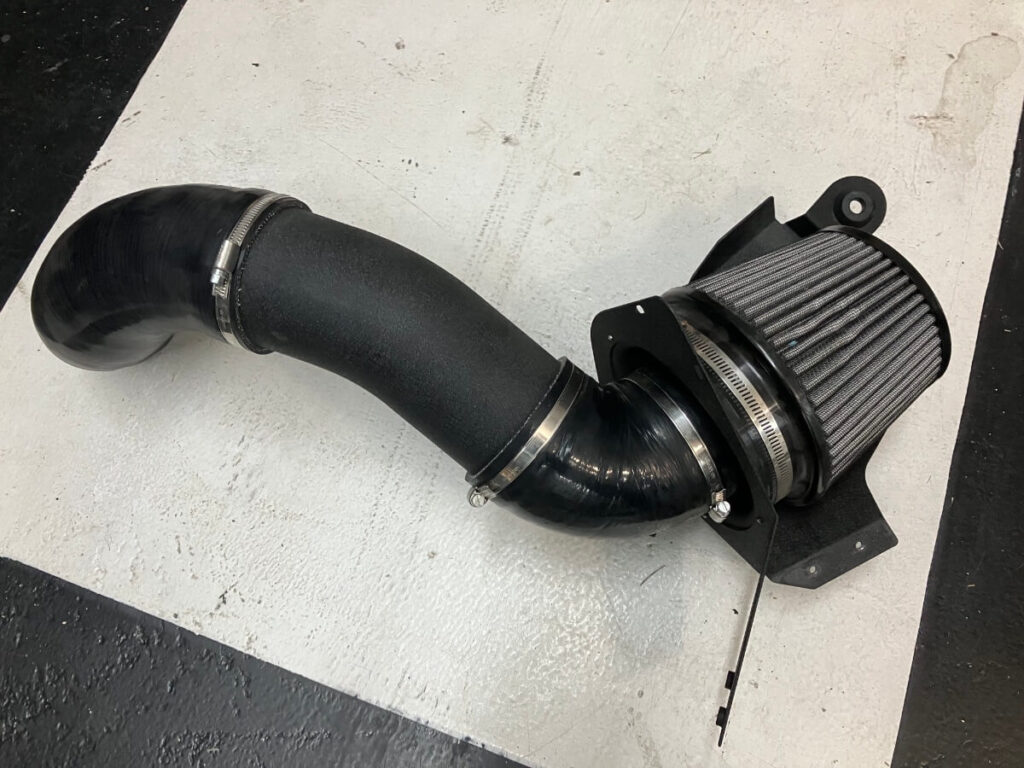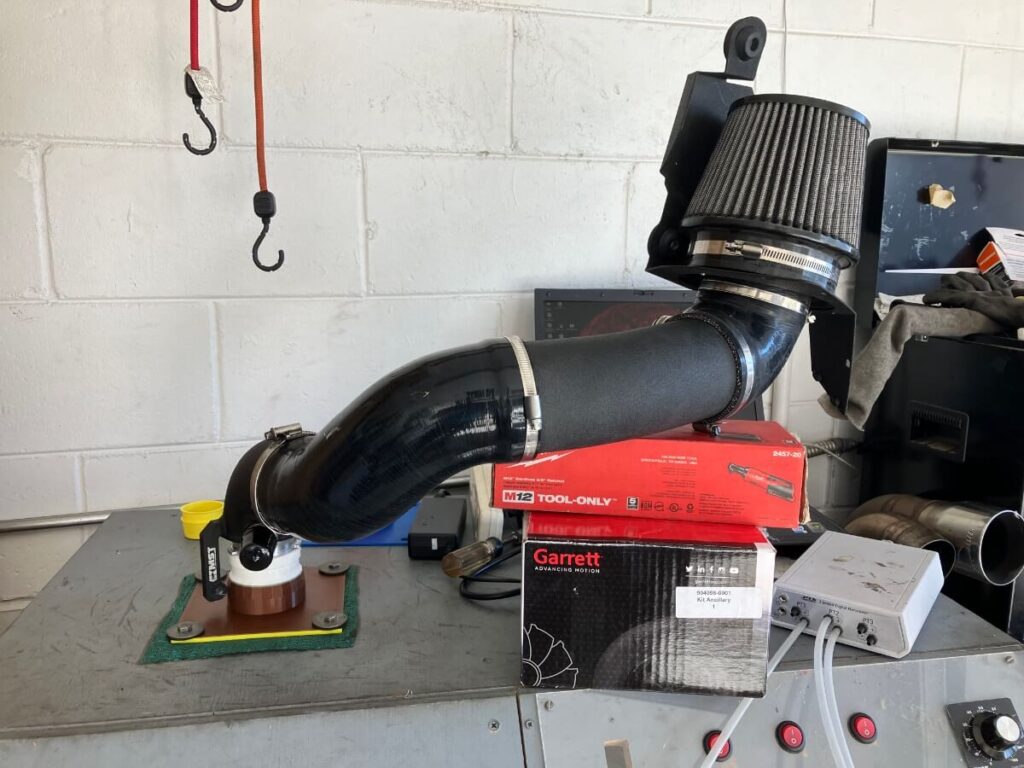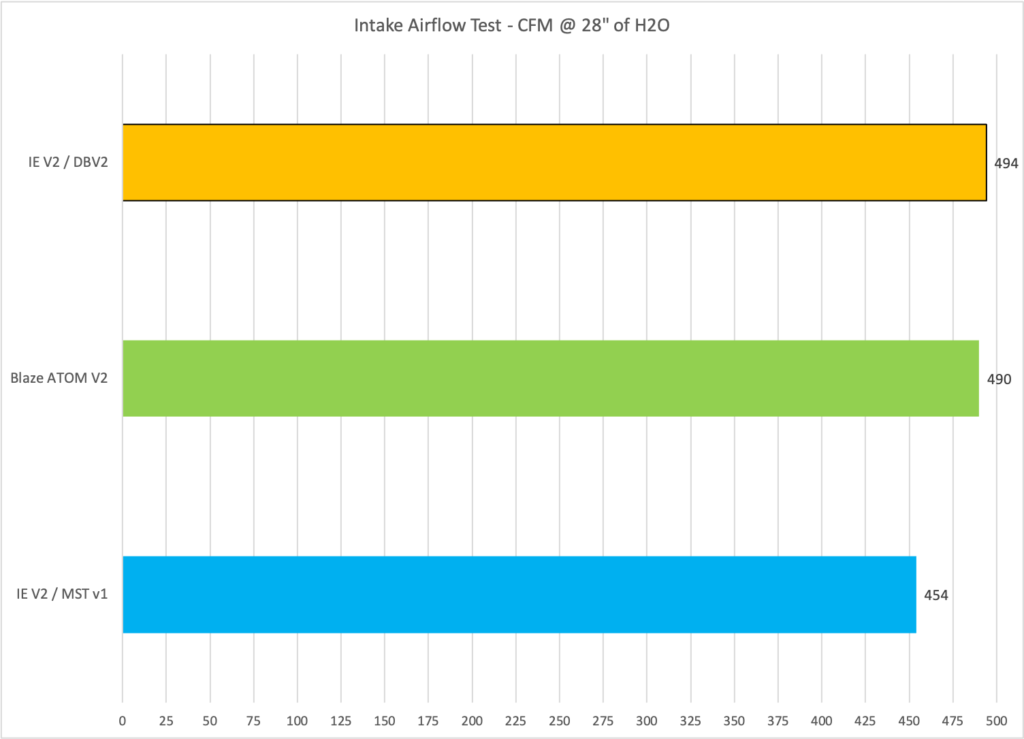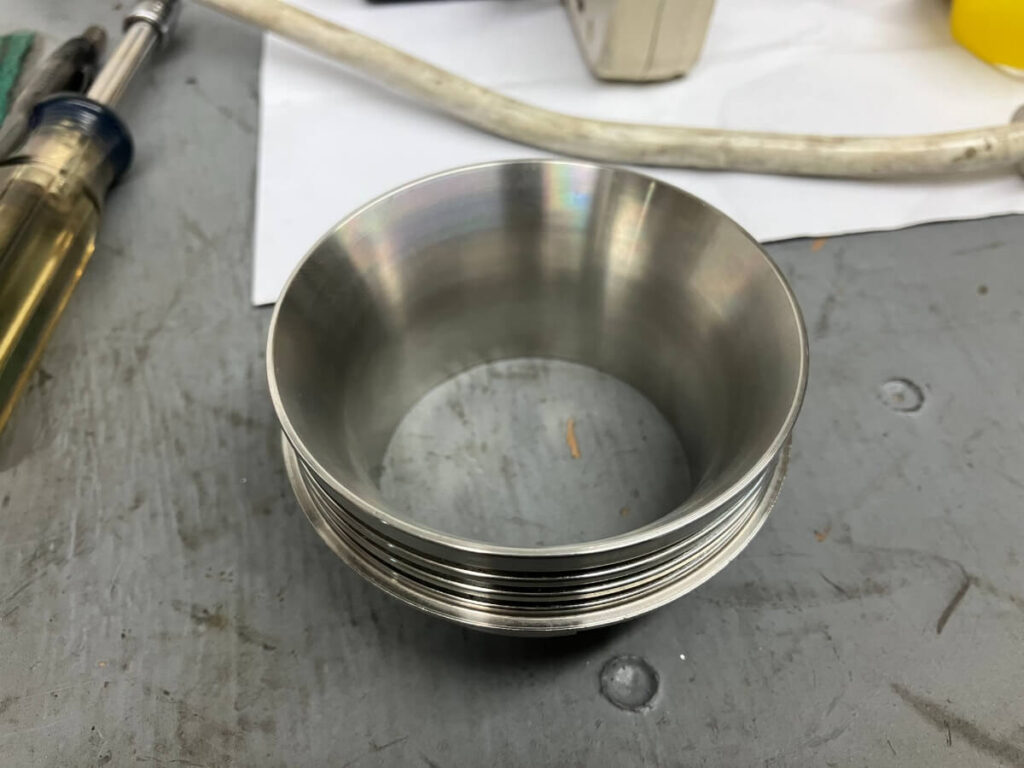Background:
Not too long after I finished testing with the Blaze Performance intake for the Mk7 I came across this exchange involving Equilibrium Tuning’s customer / tester whose tuning results with an IE intake were apparently the origin for EQTs claims about the Blaze intake.

The first comment by Mason is in response to my post about the lack of substantiation EQT provides for the claims presented on the EQT Blaze intake product page.
Mason mistakenly believes his screenshot of data posted to Facebook is a suitable substitute for substantiation by EQT on their product page, and also mistakenly believes my comments about the lack of substantiation had a basis in my flow test measurements with the Blaze intake.
What is interesting here is the advice Mason gives to Andrew, the owner of a car with an IE V2 intake and DBV2 turbo inlet elbow.
“well get rid of it”
Mason Tibljas (EQT tuning customer)
Mason’s advice to get rid of the IE V2 intake and DBV2 turbo inlet elbow implies that the Blaze intake would be a better performing setup.
To some extent this advice is understandable, Mason switched from a full IE intake (intake and turbo inlet elbow) to the Blaze intake, and some gains in performance apparently resulted.
In a previous post, I reviewed the discussion I had with another enthusiast about the flow measurements I had recorded with the Blaze Parts (over 60 different configurations tested over a month of testing) and how they compared with Mason’s results.
My hypothesis was that in Mason’s case, the bulk of the improvements realized on his car, switching from a full IE intake to the Blaze ATOM V2, was a result of replacing the IE turbo inlet elbow with the larger (hybrid turbo optimized) Blaze inlet flange.
If my previous hypothesis was correct and Andrew discarded the IE V2 intake and DBV2 TIP he likely would not see any performance change. Additionally, in the process of selling and buying replacement parts, he would likely lose money.
Investigating if the Blaze Performance ATOM V2 intake outperforms the IE V2 intake with DBV2 TIP is the subject of this post.
Product Research:
The Integrated Engineering turbo inlet elbow is designed for use with an IS20 or IS38 turbocharger, as IE states in their product description.

With a 49 mm outlet ID, the IE TIP makes a smooth transition into the 49 mm IHI turbocharger compressor inlet.
Use of this turbo inlet pipe with a larger hybrid turbocharger, like the EQT Vortex in Mason’s case, is sub-optimal.
The DBV2 TIP has a 55.4 mm outlet ID that is best suited to a hybrid turbocharger, as described by DBV2:

Mason’s initial setup was with the IE TIP (49 mm) to a hybrid turbo inlet (56 mm), which is the profile on the left.

On the right is the transition profile from the Blaze flange or DBV2 TIP to a hybrid (56mm) turbo inlet.
I don’t currently have an IE TIP on hand but I do have an MST v1 TIP that is designed for use with a stock IHI compressor inlet.
The MST v1 turbo inlet elbow is similar in size to the IE TIP with an outlet ID of 48.1 mm vs the IE at 49.0 mm. Both have a 3″ inlet, as does the DBV2 TIP.
The outlets from the DBV2 and MST v1 are shown below:

The different inlet elbows when attached to a hybrid (56 mm) turbocharger compressor inlet utilize the available cross-sectional area as shown in the next pictures:


As the pictures show, the larger DBV2 better utilizes the available area and provides a smoother transition, both positive attributes for the support of high airflow.
Test Process:
The intake airflow will be measured with a PTS flow bench using an adapter that is sized similar to a hybrid turbocharger with a 56mm inlet. Airflow will be measured at a depression of 28” of H2O.
Previously I tested the Blaze Performance intake using a hybrid turbocharger-sized adapter.
The left-hand drive Blaze ATOM V2 flows 490 CFM @ 28” of H2O when attached to the hybrid adapter.

For this test, the products I will use will be an IE V2 intake, DBV2 turbo inlet pipe, and MST v1 turbo inlet pipe.

The IE V2 intake paired with the MST v1 TIP attached to the Hybrid-turbocharger adapter will simulate the initial configuration that Mason used when tuning with EQT. Mason used an IE V2 intake and IE TIP.
The IE V2 intake paired with the DBV2 TIP attached to the Hybrid-turbocharger adapter will simulate Andrew’s intake which Mason is advising to replace with a Blaze ATOM V2.

The IE V2 intake is assembled and attached to the MST v1 turbo inlet pipe. The MST TIP is then joined to the flow bench using an adapter that simulates the compressor inlet of a hybrid turbocharger. The airflow through the intake is then measured.
The MST v1 TIP is next replaced with the DBV2 TIP and the test is repeated.
Test Results:
With the MST v1 TIP (in place of the IE TIP), the IE V2 intake flows 454 CFM @ 28” of H2O.
When attached to the DBV2 TIP the IE V2 intake flows 494 CFM @ 28” of H2O.
A comparison of these results along with the Blaze ATOM V2 intake is shown on the chart.

Conclusions:
The airflow through the IE V2 intake increased by approximately 9% when changing the turbo inlet pipe from a stock size outlet (MST v1 / IE) TIP to a hybrid optimized TIP (DBV2).
The IE V2 intake and DBV2 combination flowed 494 CFM @ 28” of H2O and previously it was found that the Blaze intake flows 490 CFM @ 28” of H2O under the same conditions.
The 4 CFM difference between the Blaze ATOM V2 and IE V2 “hybrid optimized” with the DBV2 TIP is unlikely to produce detectable performance differences on the vehicle.
The 36 CFM difference between the IE V2 with MST v1 (IE size) TIP and Blaze intake is likely the source of the differences measured on Mason’s car.
These measurements provide evidence in support of the hypothesis.
The advice given by Mason to get rid of the IE V2 intake and DBV2 TIP, if followed, is unlikely to lead to any change in performance on the subject (Andrew’s) vehicle.
This test illustrates the importance of properly matching components for optimizing airflow.
Future Test Candidate:
Observing the airflow increase that resulted from using the DBV2 TIP with the IE V2 intake raises the question of how much airflow increase would result with other intakes if paired with the DBV2 TIP.
Of the nineteen (18) aftermarket inlet pipes that have been tested the DBV2, MST V2, Burger, and Leyo are the only ones with an outlet that is sized appreciably larger than 49 mm.
Note: do88 offers a 53 mm outlet hybrid version, but I tested the stock size option.
The MST V2, Burger, and Leyo are all in the 53.x mm range at the outlet, compared to the DBV2 at 55.4 mm, so in terms of maximizing airflow potential into a hybrid turbo with a 56 mm inlet, the DBV2 is the only product I have used prior to the Blaze flange that is optimized for a hybrid turbo application.
Presently I have the Racingline R600 and Mishimoto intakes available to conduct a future test on, pairing them with the DBV2 turbo inlet elbow into the hybrid turbo adapter is what I have planned.



you got to love that when data doesn’t agree with what people want they resort to bashing the person. I hope Andrew doesn’t just blindly follow what mason tells him. As you stated you need to find what will optimize your setup, what works for someone else won’t just work for you.
Yes, spending a little time asking questions and getting answers may save time & money by avoiding a misunderstanding.
The inability of these folks to understand why the one intake flowed more/delivered more power/better metrics than the other (different TIP) is mind-blowing to me.
It is a problem when the people involved with collecting information that a product’s advertising is based upon aren’t being thorough.